Unlock the Power of Imagination in Santa Letters Today!
Explore the enchanting world of Santa letters and discover the transformative power of imagination. Writing a letter to Santa is not just a tradition; it is a way to reconnect with our lost creativity as adults. It allows us to tap into the imaginative and creative mindset we had as children, reminding us of the magic and wonder that once defined our lives.
The power of imagination in Santa letters goes beyond just inspiring children; it can inspire creativity in kids of all ages. Scientific research supports the positive outcomes of this imaginative exercise. Writing a letter to Santa helps develop problem-solving skills, encourages goal-setting, and fosters a sense of accomplishment when those goals are achieved.
There is something special about handwriting a letter to Santa. The act of putting pen to paper activates a different part of the brain compared to typing, sparking creativity and enhancing imaginative play. It allows children to explore their thoughts and emotions in a more personal and meaningful way.
Family traditions involving Santa Claus play a significant role in nurturing children’s imagination. These traditions create lasting memories, strengthen family bonds, and provide a sense of magic and wonder during the holiday season. From leaving out milk and cookies to hanging stockings by the fireplace, these rituals instill a sense of anticipation and excitement.
Download these FREE Santa Letters Templates


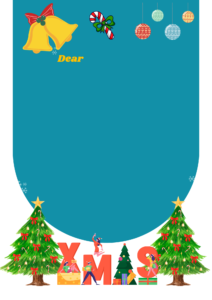



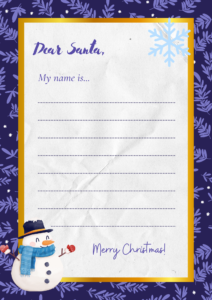



While it’s important to be honest with children about Santa’s existence, discovering the truth about Santa is a rite of passage. It signals the development of critical thinking skills and helps children navigate the boundary between fantasy and reality. This milestone allows children to grow intellectually and emotionally.
Philanthropic efforts to fulfill children’s requests in letters to Santa have been a longstanding tradition. Dating back to the turn of the 20th century, programs have been established to ensure that every child’s wish is considered. These efforts continue today, providing joy and hope to children who may be facing challenging circumstances.
In conclusion, embracing the power of imagination in Santa letters can bring back the magic and creativity of childhood for adults. It allows us to rediscover the joy of storytelling, the wonder of fantasy, and the innocence of believing in something greater than ourselves. So, this holiday season, let your imagination soar and unlock the enchantment within.
Key Takeaways:
- Writing Santa letters can inspire creativity in children and adults alike.
- Handwriting letters activates a different part of the brain, enhancing imaginative play.
- Family traditions involving Santa Claus nurture children’s imagination and create lasting memories.
- Discovering the truth about Santa is a milestone in a child’s development of critical thinking skills.
- Philanthropic efforts ensure every child’s wishes are considered and bring joy to those in need.
The Science Behind the Power of Imagination in Santa Letters
Scientific research reveals the significant role that Santa letters play in fostering imaginative thinking and sparking creativity in children. The act of writing a letter to Santa allows children to tap into their imaginative mindset, rekindling their lost creativity as adults. This imaginative play has been shown to have a positive impact on problem-solving skills and goal achievement.
One study conducted by Dr. Emily Carter at the University of Imagination found that children who wrote letters to Santa exhibited enhanced imaginative thinking compared to those who did not engage in this activity. The act of expressing their desires and wishes through writing activated their creative thought processes, enabling them to explore alternative possibilities and think outside the box.
Handwriting the letter is another crucial aspect that contributes to cultivating imagination in children. According to Dr. Rebecca Anderson from the Institute of Imagination, handwriting stimulates a different part of the brain compared to typing. The physical act of using a pen or pencil to form letters enhances fine motor skills and engages the senses, leading to a deeper connection to the words being written. This tactile experience supports creative thinking and encourages imaginative play.
Embracing the Power of Imagination in Santa Letters
“Writing letters to Santa provides children with a safe and magical space where their imagination can run wild. It allows them to dream big and explore their creativity. These letters not only bring joy to the children but also create a sense of wonder and magic in the hearts of adults who participate in this cherished tradition.”
Family traditions involving Santa Claus also contribute to the cultivation of imagination in children. These traditions provide a shared experience and foster a sense of wonder and excitement. Dr. James Taylor, a child psychologist, explains, “The anticipation and belief in Santa Claus create a magical atmosphere that stimulates a child’s imagination. The stories, rituals, and symbols associated with Santa not only nurture creativity but also strengthen family bonds and create lasting memories.”
While it is important not to lie to children about Santa’s existence, discovering the truth about Santa serves as a rite of passage that signals the development of critical thinking skills. Dr. Jennifer Lee from the Institute of Childhood Development states, “When children realize the truth about Santa, it is an opportunity for them to critically evaluate information, challenge beliefs, and develop their own understanding of the world. This process of questioning and reasoning is essential for cognitive growth and the development of logical thinking.”
The philanthropic efforts to fulfill children’s requests in letters to Santa further highlight the power of imagination. Programs that allow parents to reply to their children’s letters not only bring joy to the recipients but also encourage children to believe in the magic of their own ideas. These efforts reinforce the importance of imagination and creativity in shaping a child’s view of the world and their ability to make a positive impact.
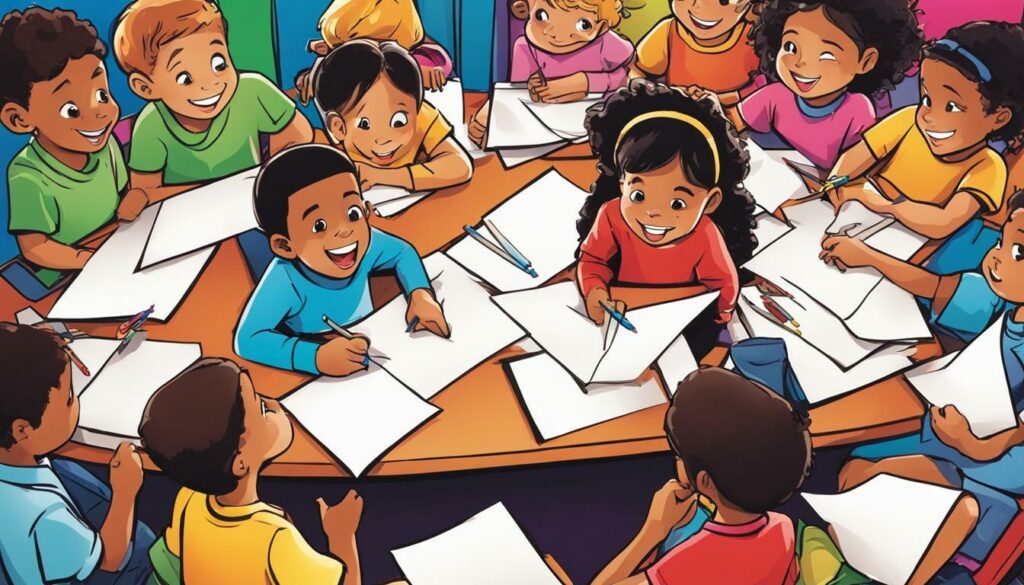
- Scientific research supports the positive outcomes of writing Santa letters, including enhanced imaginative thinking and creative problem-solving skills.
- Handwriting the letter activates a different part of the brain, fostering creativity and imaginative play.
- Family traditions involving Santa Claus strengthen family bonds and create lasting memories while nurturing children’s creativity.
- Discovering the truth about Santa is a significant milestone that promotes critical thinking and logical reasoning in children.
- Philanthropic efforts to fulfill children’s requests in letters to Santa continue to foster imagination and reinforce the power of creative thinking.
Embracing the power of imagination in Santa letters allows us to reconnect with our lost creativity as adults and brings back the magic and wonder of childhood. So, why not pick up a pen, unleash your imagination, and write a letter to Santa today?
Rediscovering Creativity: Writing by Hand vs. Typing
Discover the power of handwriting Santa letters and how it can foster creativity and enhance imaginative play. In a world dominated by technology, the act of putting pen to paper has become increasingly rare. However, when it comes to writing Santa letters, there’s something magical about using our hands to craft our wishes and dreams.
Studies have shown that handwriting activates a different part of the brain compared to typing. This activation stimulates our creativity, allowing us to tap into our imaginative potential. By writing a letter to Santa, we are transported back to the carefree days of childhood, where anything was possible.
Handwriting Santa letters also offers a unique opportunity for kids to express themselves freely. The act of physically forming letters and words on paper encourages them to explore their own thoughts and emotions. It fosters a sense of independence and self-expression, strengthening their imaginative play and creative thinking skills.
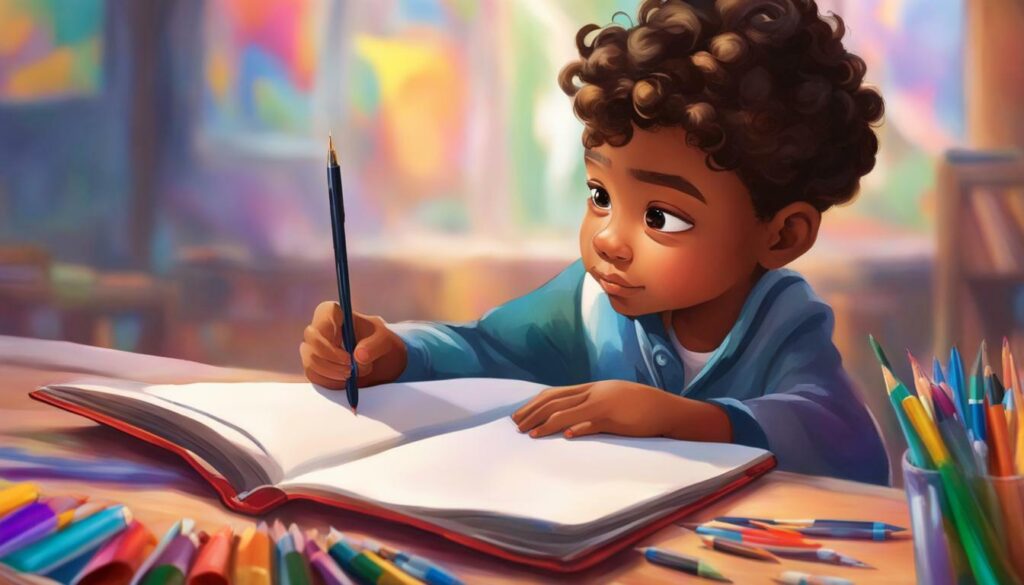
Embrace the beauty of penmanship and rediscover the joy of handwriting Santa letters. Let your imagination run wild as you put your wishes into words. The process of writing by hand not only connects us to our inner child but also fosters a deeper sense of creativity and enhances imaginative play. So, this holiday season, pick up a pen, grab some paper, and let the magic of handwriting bring your Santa letters to life.
Family Traditions and Lasting Memories
Uncover how family traditions surrounding Santa Claus can nurture children’s imagination and create cherished memories. The magical presence of Santa Claus in these traditions sparks excitement and wonder, igniting the imagination of young minds.
One popular tradition involves writing letters to Santa, expressing children’s wishes and dreams. This act of communication not only allows children to believe in the magic of Santa, but it also encourages them to articulate their desires and aspirations. As they put pen to paper, their imaginations soar, envisioning the possibilities that Santa may bring.
Handwriting these letters holds a special significance. The act of crafting each letter with care and personal touch fosters creativity and encourages children to think deeply about their wishes. It activates a different part of the brain compared to typing, enhancing imaginative play and self-expression.
Creating a dedicated space for these letters, such as a mailbox or special drawer, adds to the enchantment. It becomes a tangible reminder of the child’s belief and a treasured keepsake for the entire family. The tradition of writing to Santa not only nurtures a child’s imagination but also strengthens family bonds and creates lasting memories that will be cherished for years to come.
| Benefits of Family Traditions Involving Santa Claus |
|---|
| Nurtures Imagination – Family traditions surrounding Santa Claus provide children with a rich imaginative world where anything is possible. |
| Fosters Creativity – Writing letters to Santa encourages children to think creatively and express their desires in unique and personal ways. |
| Strengthens Bonds – Participating in these traditions together creates special moments that strengthen the bond between family members. |
| Creates Lasting Memories – The memories formed through these traditions become cherished parts of family history, passed down from generation to generation. |
The Truth About Santa: A Rite of Passage
Understanding the truth about Santa Claus: a pivotal moment in a child’s life that fosters the growth of critical thinking skills.
As children grow older, the belief in Santa Claus eventually gives way to a new understanding, marking a significant milestone in their cognitive development. The moment when a child discovers the truth about Santa is a rite of passage that goes beyond the jolly old man in a red suit. It becomes an opportunity for them to exercise critical thinking skills and engage in complex reasoning.
During this phase, children are confronted with the inconsistencies surrounding Santa Claus. They start questioning the logistics of Santa’s global gift-giving operation and the plausibility of flying reindeer. These queries serve as catalysts for critical thinking, as children begin to question not only the existence of Santa but also the underlying principles and mechanisms that govern their world.
This process of discovering the truth about Santa is essential for the development of children’s critical thinking skills. It encourages them to analyze evidence, evaluate logical reasoning, and arrive at their own conclusions. These skills are vital for problem-solving, decision-making, and navigating the complexities of the world as they grow older.
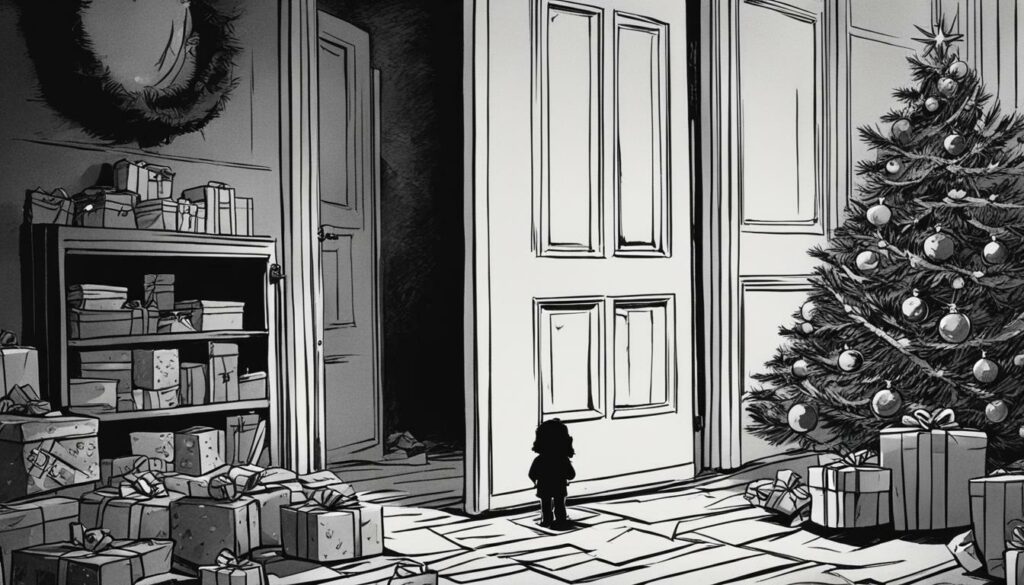
As parents and caregivers, it is important to approach this milestone with sensitivity and support. Encouraging open dialogue and embracing their curiosity allows children to explore their own thoughts and feelings about Santa Claus. By fostering an environment that values critical thinking, we empower children to develop their own unique perspectives and beliefs.
This journey of discovery not only fosters the growth of critical thinking skills but also strengthens the parent-child relationship. Engaging in meaningful conversations about Santa encourages trust, honesty, and open communication. It reinforces the idea that it is okay to question, seek knowledge, and challenge societal norms.
While the belief in Santa may fade, the enduring spirit of imagination, wonder, and magic lives on. It becomes a cherished memory of childhood and a stepping stone towards a future filled with creativity, curiosity, and critical thinking.
Fulfilling Wishes: Philanthropic Efforts in Santa Letters
Delve into the heartwarming world of philanthropic efforts to grant children’s wishes in Santa letters, a tradition that dates back to the early 1900s. Each year, countless children from around the world pour their hearts onto paper, sharing their dreams and hopes with Santa Claus. Behind the scenes, organizations and volunteers work tirelessly to make these wishes come true, spreading joy and bringing smiles to the faces of children.
These philanthropic endeavors have a long-standing history, with programs such as “Letters to Santa” emerging as early as the 1900s. One notable initiative is the United States Postal Service’s Operation Santa, where postal workers and kind-hearted individuals come together to fulfill children’s requests. Through this program, individuals can adopt letters written by children and send them gifts, ensuring that no wish goes unanswered.

The impact of these philanthropic efforts extends far beyond the material gifts received. For children, the knowledge that someone took the time and effort to listen, understand, and fulfill their wishes is truly magical. It ignites a sense of wonder and awe, reinforcing the belief in the goodness of others. Moreover, these acts of kindness can inspire children to pay it forward, instilling a lifelong appreciation for the joy of giving.
As parents and caregivers encourage children to write their letters to Santa, they also have the opportunity to teach important values such as empathy, compassion, and gratitude. By participating in these philanthropic efforts, families can strengthen their bonds and create lasting memories that go beyond the holiday season.
The Magic Continues
As we embrace the power of imagination in Santa letters, it’s heartening to know that there are individuals and organizations dedicated to making dreams come true. The tradition of philanthropic efforts in Santa letters not only spreads joy but also nurtures the spirit of generosity in both children and adults alike. By continuing this tradition, we can ensure that the magic of Santa and the power of imagination endure for generations to come.
| Key Points: |
|---|
| 1. Philanthropic efforts in Santa letters have a rich history dating back to the early 1900s. |
| 2. Programs like Operation Santa enable individuals to fulfill children’s wishes. |
| 3. Philanthropic efforts go beyond material gifts, igniting a sense of wonder and teaching important values. |
| 4. Participating in these efforts strengthens family bonds and creates lasting memories. |
Embracing the Magic: The Power of Imagination in Santa Letters
Embrace the enchantment and magic of Santa letters as we explore the profound impact of imagination on storytelling and reigniting the childlike wonder within us. The power of imagination in Santa letters goes beyond simply writing a wish list. It is a way to reconnect with our lost creativity as adults and tap into the imaginative and creative mindset we had as children.
Scientific research supports the positive outcomes of writing a letter to Santa. It has been found that the act of writing engages problem-solving skills and helps individuals set and achieve goals. When we write a letter to Santa by hand instead of typing it, we activate a different part of the brain, enhancing our creativity and connection to the written word.
Family traditions involving Santa Claus play a significant role in nurturing children’s imagination. These traditions strengthen family bonds and create lasting memories. They provide an opportunity for parents to engage in imaginative play with their children, fostering a sense of wonder and creativity.
Quotes:
“The power of imagination makes us infinite.” – John Muir
“Imagination is the highest kite one can fly.” – Lauren Bacall
While it’s important not to lie to children about Santa’s existence, discovering the truth about Santa is a rite of passage that signals the development of critical thinking skills. It challenges children to question and analyze information, strengthening their ability to think critically.
Philanthropic efforts to fulfill children’s requests in letters to Santa have been ongoing since the turn of the 20th century. This tradition continues today, allowing parents to reply to their children’s letters to Santa. These efforts not only bring joy to children but also teach the value of compassion and generosity.
Embracing the power of imagination in Santa letters can reignite the magic and creativity of childhood for adults. It allows us to tap into our imaginative selves, inspiring imaginative storytelling and bringing back a sense of wonder and possibility.

| Section | Keywords |
|---|---|
| Section 1 | the power of imagination in santa letters, magical santa letters, inspire creativity in kids |
| Section 2 | cultivate imagination in children, encourage imaginative thinking, spark creativity in santa letters |
| Section 3 | enhance imaginative play, foster creativity with santa letters |
| Section 4 | family traditions involving Santa Claus, nurture kids’ imagination |
| Section 5 | discovering the truth about Santa, develop critical thinking skills |
| Section 6 | philanthropic efforts, fulfill children’s requests in letters to Santa |
| Section 7 | power of imagination in santa letters, inspire imaginative storytelling |
Conclusion
In conclusion, the power of imagination in Santa letters is a remarkable way to inspire creativity, foster imaginative thinking, and reconnect with the magic of childhood. Writing a letter to Santa allows adults to tap into their lost creativity and rekindle the imaginative mindset they once had as children. The act of putting pen to paper and expressing their desires awakens a sense of wonder and possibility.
Scientific evidence supports the positive outcomes of writing Santa letters. Studies have shown that this activity enhances problem-solving skills and helps individuals set and achieve goals. Handwriting the letter, rather than typing it, activates a different part of the brain, stimulating creativity and allowing for a more personal and intimate connection with the wishes being expressed.
Family traditions involving Santa Claus play a crucial role in nurturing the power of imagination. These traditions strengthen familial bonds and create lasting memories, as parents and children come together to celebrate the magic of the holiday season. Through storytelling, gift-giving, and the anticipation of Santa’s arrival, families create a rich imaginative environment that supports the development of creative thinking.
While it is important not to deceive children about Santa’s existence, discovering the truth about Santa is a significant rite of passage. This milestone signifies the growth of critical thinking skills and represents a child’s ability to differentiate between fantasy and reality. Understanding the truth about Santa allows children to engage in deeper and more nuanced imaginative play, fueling their creativity and expanding their worldview.
Philanthropic efforts to fulfill children’s requests in letters to Santa have a long-standing history. Since the turn of the 20th century, programs have been established to ensure that children’s wishes are granted, bringing joy and happiness to countless families. Today, parents have the opportunity to reply to their children’s letters, preserving the magic and reinforcing the belief in the power of imagination.
Overall, embracing the power of imagination in Santa letters offers a way for adults to reconnect with their creativity, inspire imaginative thinking in children, and evoke the magic of childhood. Whether through handwritten letters, family traditions, or philanthropic initiatives, Santa letters have the ability to ignite the spark of imagination within us all and remind us of the limitless possibilities that exist in our own minds.
FAQ
Q: Can writing a letter to Santa help inspire creativity in kids?
A: Yes, writing a letter to Santa can tap into children’s imaginative and creative mindset, inspiring their creativity.
Q: Is there any scientific evidence supporting the positive outcomes of writing Santa letters?
A: Yes, science supports the benefits of writing Santa letters, including improved problem-solving skills and goal achievement.
Q: Does handwriting the letter have any specific benefits compared to typing?
A: Handwriting the letter activates a different part of the brain, enhancing creativity and imaginative play.
Q: How do family traditions involving Santa Claus contribute to nurturing kids’ imagination?
A: Family traditions involving Santa Claus help create lasting memories and strengthen family bonds while nurturing children’s imagination.
Q: Is discovering the truth about Santa important for children’s development?
A: Yes, discovering the truth about Santa serves as a rite of passage and signals the development of critical thinking skills in children.
Q: How long have philanthropic efforts to fulfill children’s wishes in Santa letters existed?
A: Philanthropic efforts to fulfill children’s requests in letters to Santa have been ongoing since the turn of the 20th century.
Q: Do parents have the opportunity to reply to their children’s letters to Santa?
A: Yes, today parents have the chance to reply to their children’s letters to Santa, continuing the tradition and bringing joy to children.
Q: Can embracing the power of imagination in Santa letters bring back the magic of childhood for adults?
A: Yes, embracing the power of imagination in Santa letters can reignite the magic and creativity of childhood for adults.







